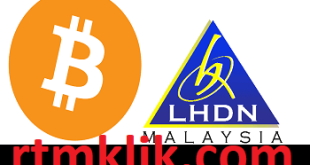Cardano: A Third-Generation Blockchain Explained
Cardano is a third-generation, proof-of-stake blockchain neighbourhood headquartered in 2015. It can facilitate peer-to-peer transactions with its interior ADA cryptocurrency, alternatively, moreover goal is to evolve into a decentralized utility platform.
Built by way of teachers and scientists, Cardano strives to obtain sustainability, scalability, and interoperability via a giant search for and peer review. It seeks to tackle troubles plaguing fundamental blockchains like Bitcoin and Ethereum.
Transactions and ADA Cryptocurrency
Like extraordinary blockchains, Cardano allows clients to transact right away with the utilization of its native token referred to as ADA. Named after nineteenth-century mathematician Ada Lovelace, ADA is used to pay transaction fees, take part in staking, and feature one-of-a-kind operations.
Cardano employs the Ouroboros proof-of-stake consensus algorithm to validate transactions and generate new ADA. This approves it to characteristic sustainably barring energy-intensive proof-of-work mining required via Bitcoin.
Users can stake their ADA to help validate transactions. The extra cash staked, the greater the hazard of being chosen to add new blocks to the chain and earn rewards. This rewards customers for securing the network.
Beyond Peer-to-Peer Transactions
While Cardano can securely facilitate native ADA transactions, its massive ambitions are as a smart contract platform for decentralized finance and applications.
Cardano is at present rolling out its Alonzo upgrade, which will allow help for clever contracts written in Plutus. This is a purpose-built contract enhancement language created for Cardano.
Through Plutus sensible contracts, builders will be in a function to assemble decentralized apps on Cardano identical to Ethereum. These apps can utilize ADA for repayments and transactions.
Methodical and Peer-Reviewed Approach
Cardano stands out for its heavy emphasis on peer-reviewed academic look-up to engineer key elements of its blockchain. Extensive comparison goes into designing core protocols before deployment.
This rigorous method displays Cardano’s dedication to establishing a tightly closed and sustainable basis for blockchain adoption. However, critics argue it has slowed improvement and adoption in distinction to faster-moving rivals.
Cardano is in modern times transitioning between its Shelley and Goguen enhancement phases. Shelley centred on decentralization at the same time as Goguen will allow smart contracts. In future phases, Basho and Voltaire will optimize scalability and governance.
Real-World Traction Going Forward
As its capabilities expand, Cardano hobbies to onboard greater clients and adopters. It currently partnered with blockchain analytics corporations to decorate regulatory compliance and transparency for financial organisations through the usage of ADA.
Cardano founders additionally allied with Ethiopia to enhance identification selections through the use of the blockchain. Real-world use situations will display how Cardano’s science performs on a world stage.
Despite its deliberate pace, Cardano has steadily constructed abilities as evidenced by using the usage of over $20 billion in market price for its ADA token. By taking a “slow and steady” approach, it intends to grow to be a reliable pillar of the decentralized monetary device via scientific principles.
Cardano then again has an exact deal left to prove. But it continues gaining converts attracted to its mission-driven philosophy of setting up blockchain science the suited way. The coming two years will figure out whether or not or no longer it can supply its sweeping resourceful and prescient to reform blockchain.
Cardano: A Third-Generation Blockchain Network Focused on Sustainability
Cardano is a public blockchain platform designed to be sustainable, scalable, and interoperable. Launched in 2017, it represents the 1/3 technological know-how of blockchain technological expertise after Bitcoin and Ethereum.
Cardano was once headquartered through the capacity of Ethereum co-founder Charles Hoskinson and constructed via the capacity of engineering business enterprise Input Output Hong Kong (IOHK) via evidence-based methods. The neighbourhood goal is to evolve blockchain advantage even as heading off issues confronted with the useful resource of older platforms.
Proof-of-Stake Consensus
At Cardano’s core is the Ouroboros proof-of-stake consensus protocol. This approves the neighbourhood to technique transactions and reaps distributed consensus without energy-intensive cryptocurrency mining.
Instead of mining, Cardano clients can stake their ADA cash to take a phase in validating transactions. The larger the money staked, the larger the hazard of being chosen to create new blocks. Proof-of-stake is touted as a greener desire for proof-of-work chains like Bitcoin.
Beyond its electricity efficiency, Ouroboros additionally lets in tightly closed and scalable consensus. Future iterations will introduce sharding abilities to in a similar fashion make bigger Cardano’s transaction throughput.
Emphasis on Peer-Reviewed Research
A defining difficulty of Cardano is its reliance on peer-reviewed tutorial research. Over one hundred students and scientists contributed to contrast and opinions of the network’s layout principles.
This evidence-based approach pursuits to create an apparent and ethical blockchain grounded in modern-day research. All Cardano improvement passes through this method earlier than deployment.
While slower than improvised development, this emphasis on peer consideration lends self-assurance to Cardano’s safety and technical foundations. It displays a long-term way of thinking about evolving blockchain technology.
- Network Evolution in Phases
- Cardano’s roadmap is described in the course of 5 eras and phases:
- Byron Era: Foundation (launched 2017)
- Shelley Era: Decentralization (staking launched 2020)
- Goguen Era: Smart Contracts (launching 2022)
- Basho Era: Scaling (future)
- Voltaire Era: Governance (future)
This staged rollout lets in huge checking out and opinions between phases. The neighbourhood is currently transitioning between the Shelley and Goguen eras to entirely decentralize and add wise contract functionality.
Future Goals: Interoperability and Adoption
Looking ahead, Cardano’s goals are to enable cross-chain interoperability by sidechains that are a part of exterior blockchains. This will permit it to bridge siloed networks and furnish wider utility.
On the adoption side, Cardano is growing partnerships in areas like grant chain tracking, fintech, and digital identification in Africa. Real-world use will exhibit its capabilities as the community matures.
Criticisms and Challenges
Some criticize Cardano’s slow peer-reviewed enhancement as hazardous to keeping tempo with rivals. It additionally lacks the developer mindshare of Ethereum.
Others argue that instructional rigour is a good deal much less critical than examined real-world capabilities. But Cardano sees this deliberate strategy as integral to assembling next-generation blockchain science sustainably.
As a later entrant, Cardano faces opposition from massive DeFi ecosystems. However, it is ambitious to win market share by way of getting to recognize their errors and weaknesses.
Overall, Cardano charts a one-of-a-kind direction that contrasts with the past rushed blockchain projects. Its methodical and mission-driven roadmap ought to either pay off handsomely or motivate it to be left behind.
But the community is staking its direction on doing blockchain provably right, even if it takes longer. Cardano’s attainable grant will decide whether or not its educational foundations translate to real-world utility and adoption.


